1

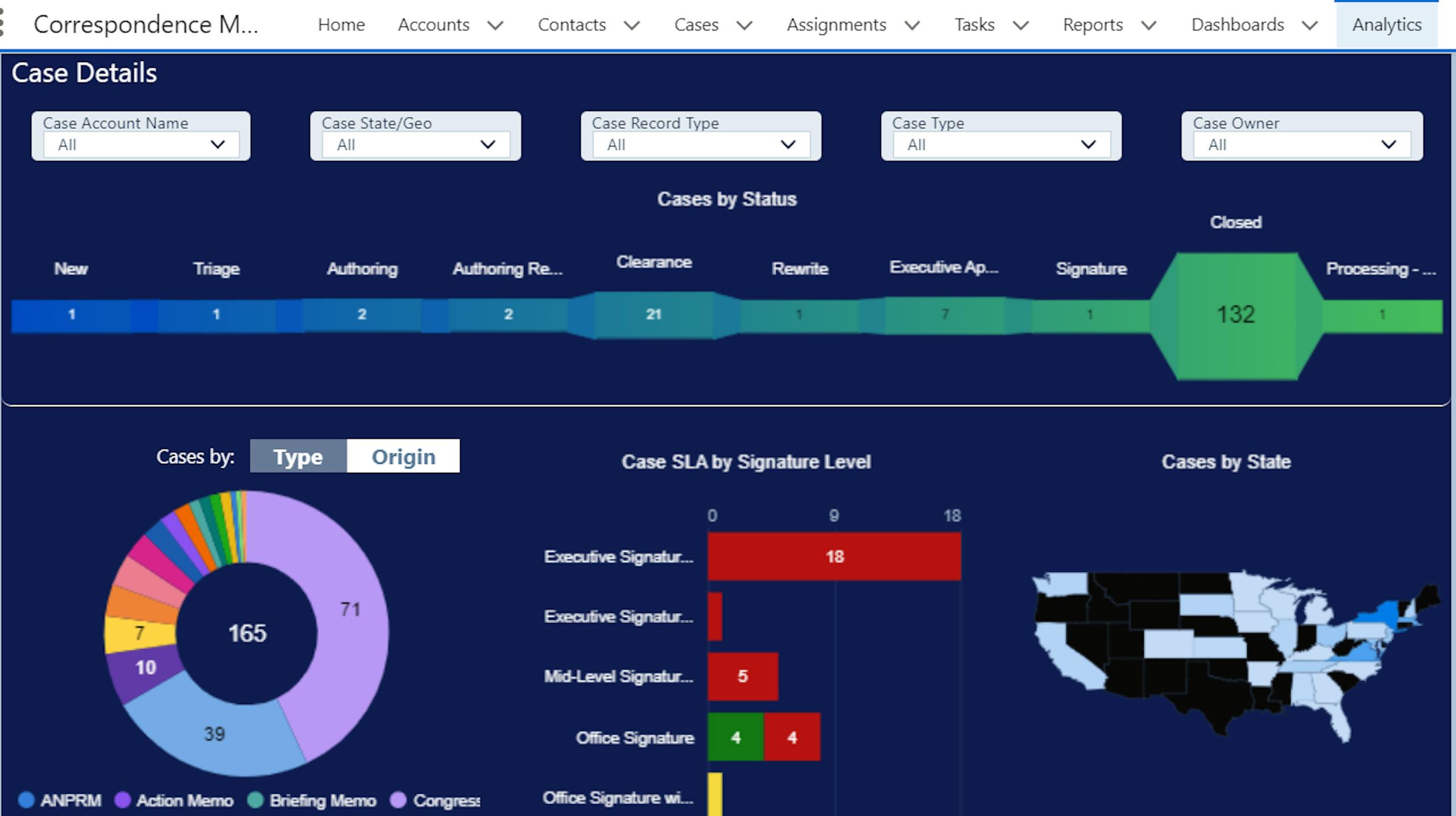
Dive into Data
With predictive analytics embedded in the response process and detailed visualizations, correspondence response leadership can transform their work with data to identify process gaps, visualize key trends, and ensure critical correspondence is receiving a timely, consistent, and adequate response. Agencies can leverage data to proactively engage with constituents, Congress members, Congressional committees, and other government agencies.

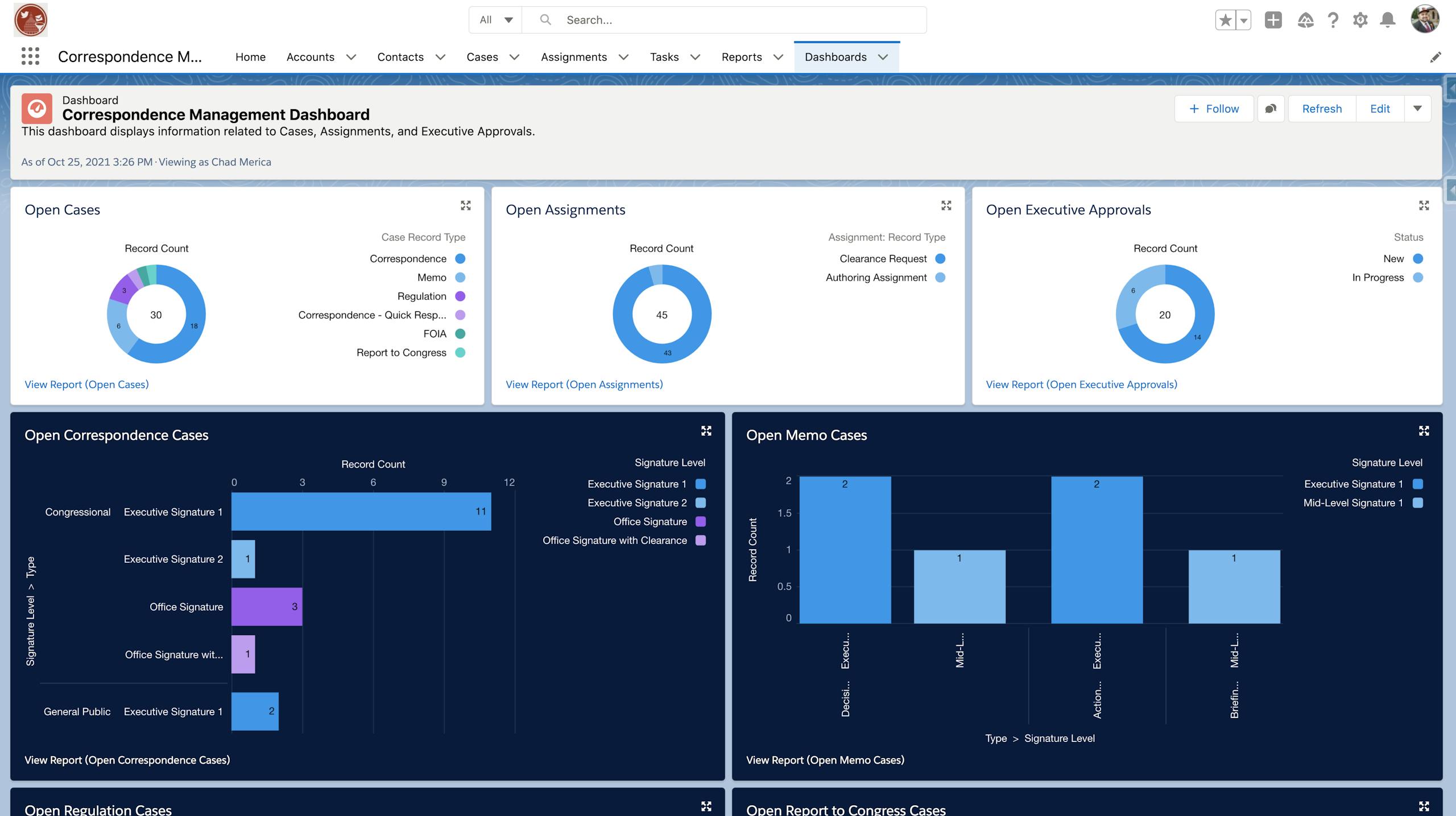
Manage Correspondence
With Salesforce’s Correspondence Management application, correspondence teams can listen to, filter, sort, and respond to letters, generate policy documents, and collaborate with stakeholders efficiently. The application enables the receipt of requests via multiple channels, the ability to route requests, automated notifications, and the engagement of applicable stakeholders to break down existing silos of work. Data-driven actionable insights into relevant business issues are available with reports and dashboards.

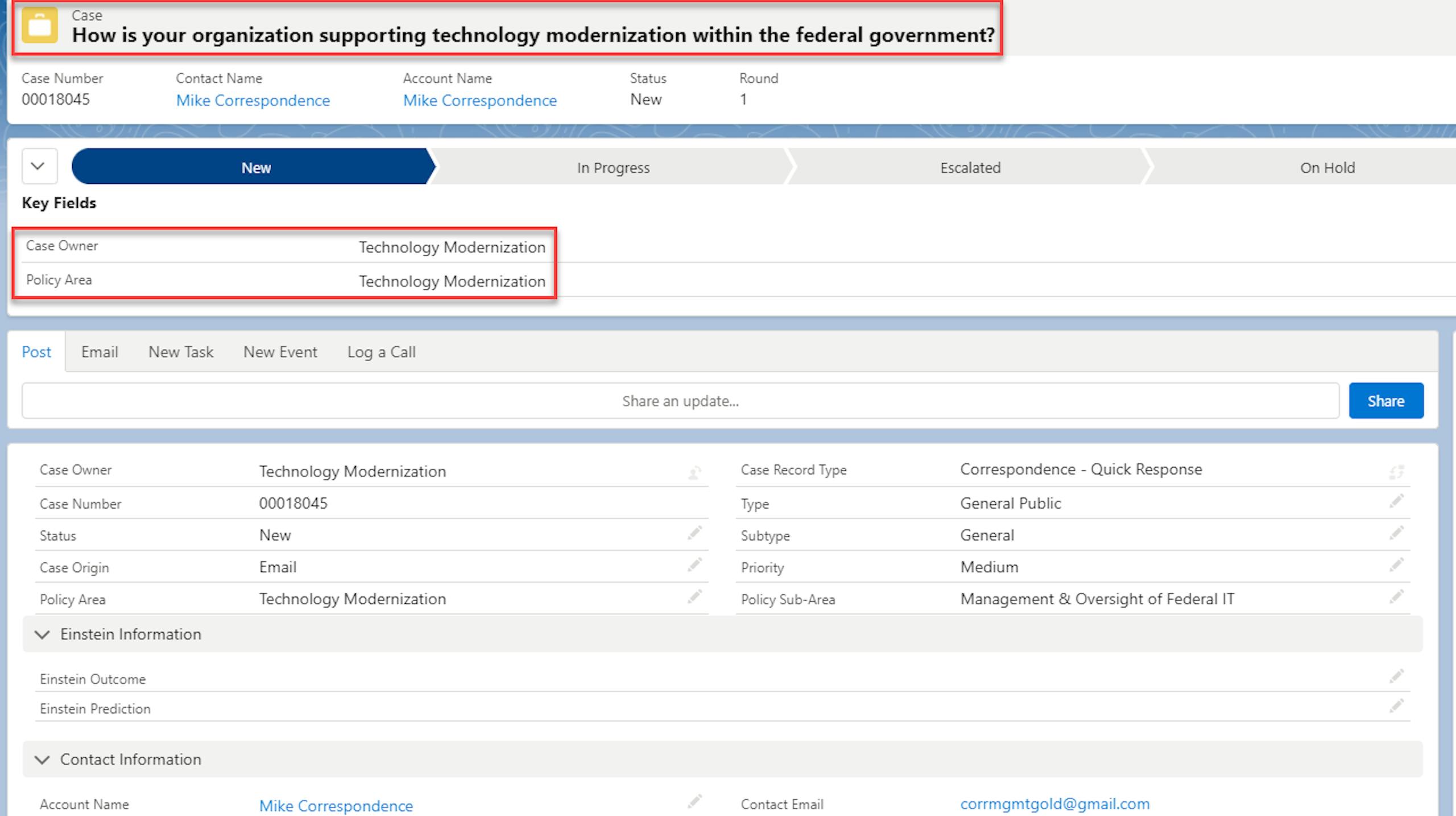
Automated Triage and Routing
Inbound correspondence can be automatically triaged and routed for response based on email or letter content, improving response timeliness by ensuring the correspondence reaches the right team at the right time.

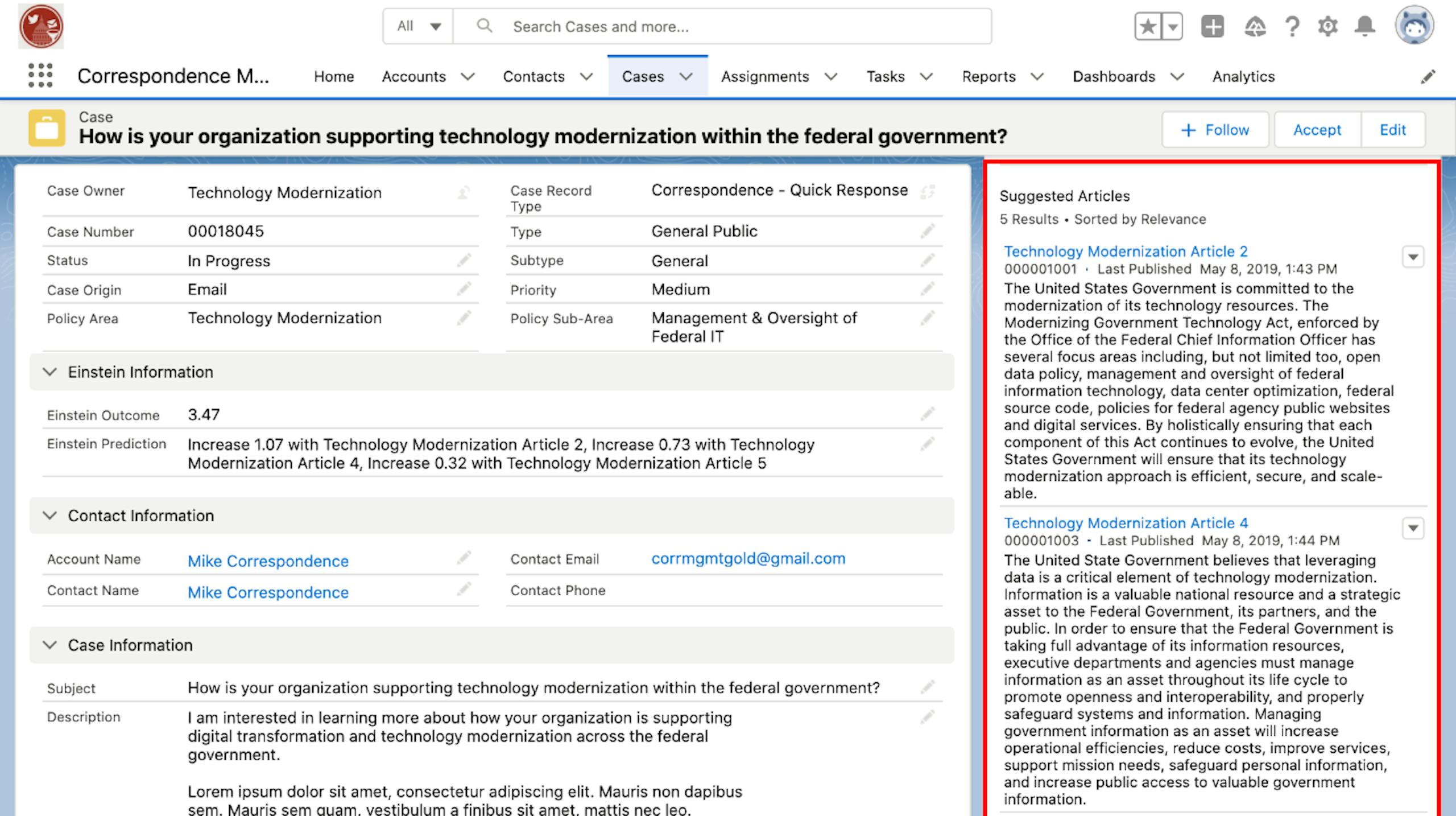
Create Pre-Approved Responses
Agencies can create pre-approved responses that will be suggested based on inbound correspondence subject or topic to ensure consistent messaging. After confirming appropriate automated triage, correspondence specialists can select from existing content that has been previously approved and provides a consistent response to constituents regardless of intake channel.

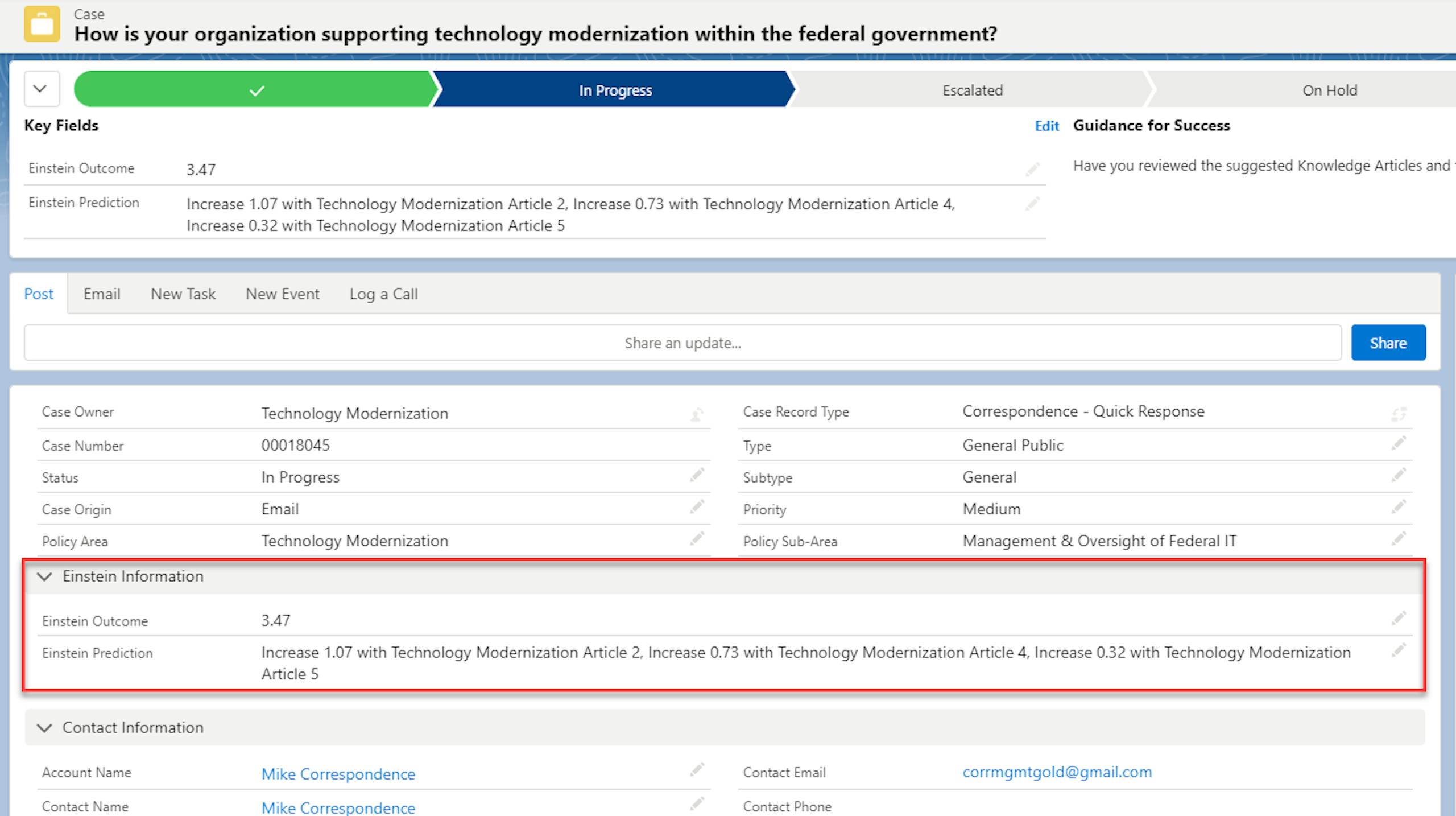
Leverage Feedback to Increase Constituent Satisfaction
Beyond ensuring consistent messaging, agencies can leverage predictive analytics to facilitate the highest level of constituent satisfaction. By evaluating previous responses and the associated constituent level of satisfaction captured in Salesforce, predictive analytics provide guidance on the most relevant pre-approved content for a specific piece of correspondence.

Engage Stakeholders for Formal Correspondence
Formal correspondence, such as congressional letters or other policy documents, often requires multiple iterations including drafting, editing, reviewing, and approving a response. Each of these phases within the process may require multiple stakeholders from various offices. Correspondence specialists can route formal documents to multiple stakeholders with unique tasks within Salesforce.

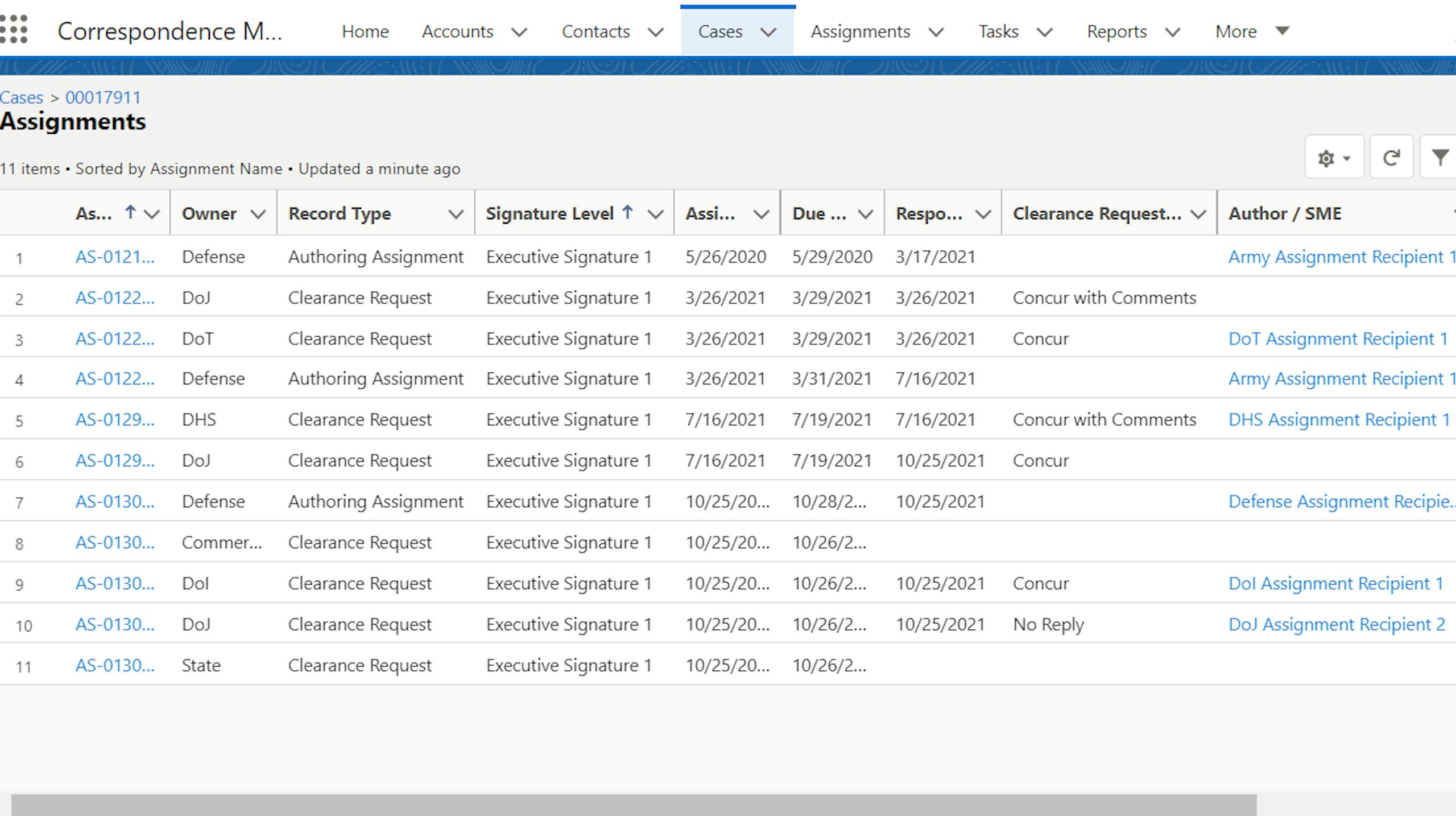
Track Concurrence and Approvals
When formal correspondence requires engagement by multiple stakeholders, correspondence specialists can easily track the current status of a response. Within a single view, it is easy to identify which groups and individuals have collaborated on a document and the role each has been responsible for (e.g., drafting, clearing, editing, approving, or signing a document).

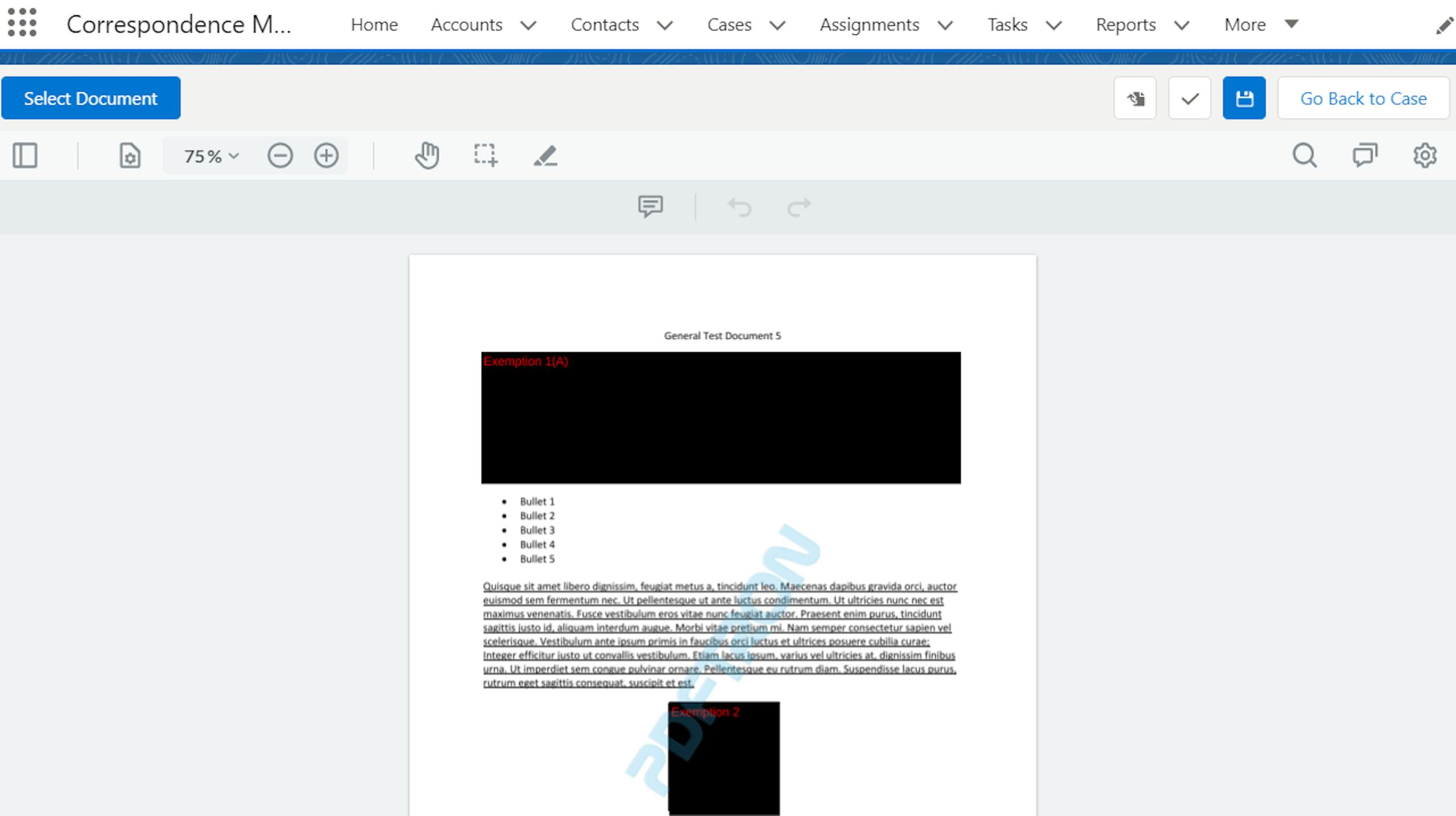
Redact Sensitive Content
Freedom of Information Act (FOIA) requests often require the coordination of multiple stakeholders to retrieve applicable documents. Once these documents are retrieved, they may require redaction of sensitive content before release. FOIA specialists can leverage workflow within Salesforce to collect applicable documents from stakeholders and then redact sensitive content from these documents before responding to the request.

Track Progress and Overall Engagement
In a single view, correspondence specialists and leadership can obtain a 360-view of interactions with groups and individuals. This comprehensive view helps to ensure consistent messaging across channels and allows an agency to develop proactive engagement strategies for critical stakeholders.


Dive into Data
With predictive analytics embedded in the response process and detailed visualizations, correspondence response leadership can transform their work with data to identify process gaps, visualize key trends, and ensure critical correspondence is receiving a timely, consistent, and adequate response. Agencies can leverage data to proactively engage with constituents, Congress members, Congressional committees, and other government agencies.


Manage Correspondence
With Salesforce’s Correspondence Management application, correspondence teams can listen to, filter, sort, and respond to letters, generate policy documents, and collaborate with stakeholders efficiently. The application enables the receipt of requests via multiple channels, the ability to route requests, automated notifications, and the engagement of applicable stakeholders to break down existing silos of work. Data-driven actionable insights into relevant business issues are available with reports and dashboards.


Automated Triage and Routing
Inbound correspondence can be automatically triaged and routed for response based on email or letter content, improving response timeliness by ensuring the correspondence reaches the right team at the right time.


Create Pre-Approved Responses
Agencies can create pre-approved responses that will be suggested based on inbound correspondence subject or topic to ensure consistent messaging. After confirming appropriate automated triage, correspondence specialists can select from existing content that has been previously approved and provides a consistent response to constituents regardless of intake channel.


Leverage Feedback to Increase Constituent Satisfaction
Beyond ensuring consistent messaging, agencies can leverage predictive analytics to facilitate the highest level of constituent satisfaction. By evaluating previous responses and the associated constituent level of satisfaction captured in Salesforce, predictive analytics provide guidance on the most relevant pre-approved content for a specific piece of correspondence.

Engage Stakeholders for Formal Correspondence
Formal correspondence, such as congressional letters or other policy documents, often requires multiple iterations including drafting, editing, reviewing, and approving a response. Each of these phases within the process may require multiple stakeholders from various offices. Correspondence specialists can route formal documents to multiple stakeholders with unique tasks within Salesforce.


Track Concurrence and Approvals
When formal correspondence requires engagement by multiple stakeholders, correspondence specialists can easily track the current status of a response. Within a single view, it is easy to identify which groups and individuals have collaborated on a document and the role each has been responsible for (e.g., drafting, clearing, editing, approving, or signing a document).


Redact Sensitive Content
Freedom of Information Act (FOIA) requests often require the coordination of multiple stakeholders to retrieve applicable documents. Once these documents are retrieved, they may require redaction of sensitive content before release. FOIA specialists can leverage workflow within Salesforce to collect applicable documents from stakeholders and then redact sensitive content from these documents before responding to the request.

Track Progress and Overall Engagement
In a single view, correspondence specialists and leadership can obtain a 360-view of interactions with groups and individuals. This comprehensive view helps to ensure consistent messaging across channels and allows an agency to develop proactive engagement strategies for critical stakeholders.


Dive into Data
With predictive analytics embedded in the response process and detailed visualizations, correspondence response leadership can transform their work with data to identify process gaps, visualize key trends, and ensure critical correspondence is receiving a timely, consistent, and adequate response. Agencies can leverage data to proactively engage with constituents, Congress members, Congressional committees, and other government agencies.






